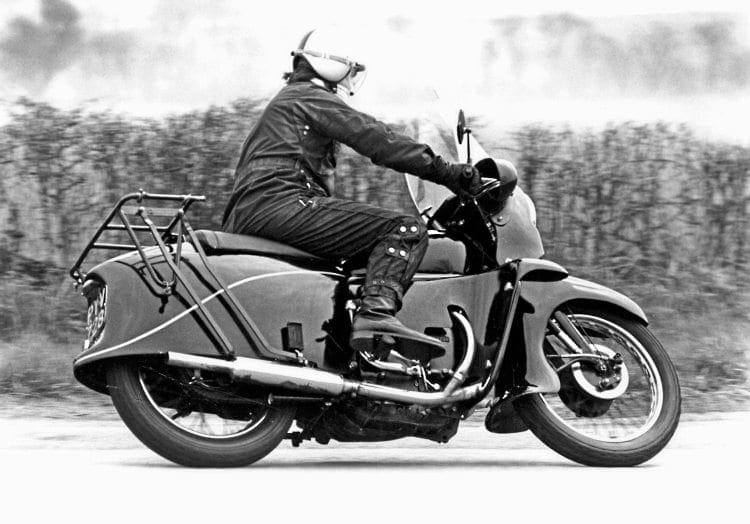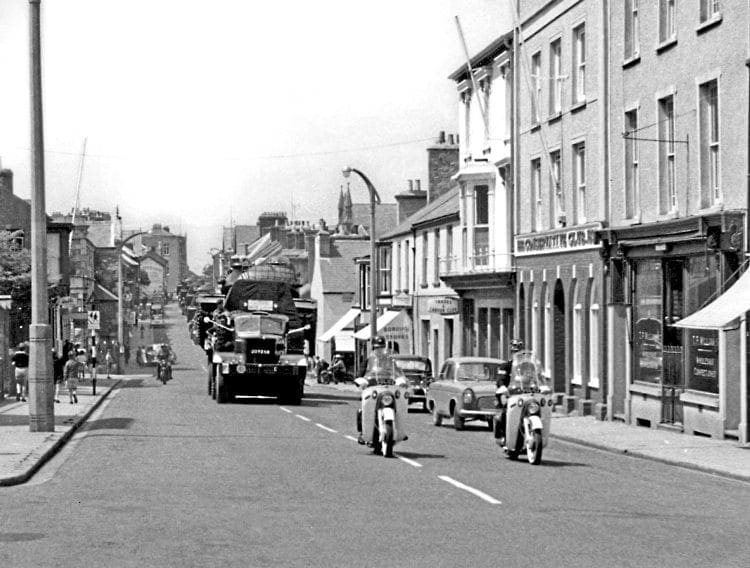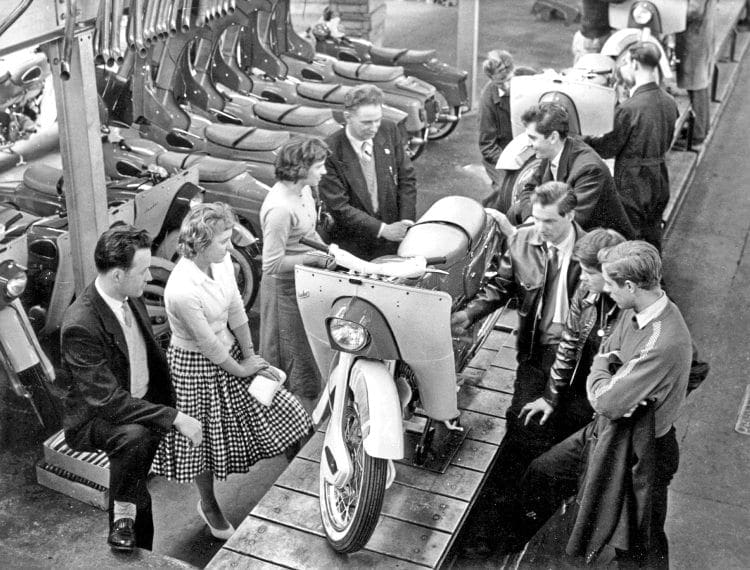Pete Kelly looks back to the motorcycle styling practices that led to the ‘bathtub’ era of the late 1950s and early 60s.

Putting on my steam railway hat for a brief moment, in Victorian times many express passenger locomotives would have the top portions of their driving wheels hidden behind intricate splashers; safety valves would be surrounded by beautifully crafted brass ‘bonnets’ and cylinder valve-gear, and often the cylinders themselves would be situated inside rather than outside the frames because the exposure of such ‘coarse’ mechanical parts was considered unseemly in the extreme by the upper travelling classes.

Two Ariel Leader police bikes escort a heavy load convoy – but can anyone identify the location?
The reasons for similar ‘cover-ups’ of motorcycles, particularly during the ‘bathtub’ era of the mid-to-late 1950s, were probably more about cleanliness and aesthetics – but several British manufacturers, including Triumph, Norton, Vincent, Francis-Barnett, Ambassador, Excelsior, Ariel and Velocette, flirted with the idea, and of course it had always been the unique selling point of autocycles and scooters.
The downside of all this ‘covering up’, as I found when I fitted a full dustbin fairing to my Moto Guzzi Le Mans around 1990, was the near-impossibility of cleaning and/or maintaining anything to do with the front wheel and forks – and undoubtedly for similar reasons I clearly remember many Ariel Leaders being ridden with their side panels completely removed.

Cocooned
Although many modern tourers are cocooned in more plastic than you can shake a stick at, and the idea of partially or fully enclosed motorcycles goes back to well before 1939 to Coventry-Eagle, Excelsior and others, I’m confining this archive feature to the later 1940s, the 1950s and the early-to-mid 60s – the period when the practice seemed to reach a peak – and it’s surprising just how many British manufacturers had a go at the idea.
Read more in the September issue of OBM – on sale now!





